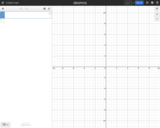
Graph functions, plot tables of data, evaluate equations, explore transformations, and more – for free!
- Subject:
- Mathematics
- Material Type:
- Interactive
- Provider:
- Desmos
- Date Added:
- 05/29/2022

Graph functions, plot tables of data, evaluate equations, explore transformations, and more – for free!
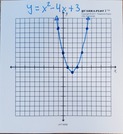
This lesson plan requires students to create a resource using iMovie that can be used as notes, while also providing students and opertunitiy to collaborate and communicate to describe the six key features of a graph and table.

Article with referencing about rarity of voter fraud in the United States

In this video segment from Nature, scientists question how animals mysteriously survive natural disasters.

Las pruebas de detección en el aula son como los exámenes de salud en la consulta de un médico.

In this video from NOVA scienceNOW, learn how scientists detect potential signs of life on distant planets.
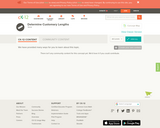
This short video and interactive assessment activity is designed to give fourth graders an overview of length (english units).

It's an issue that teachers, district leaders, policymakers, and curriculum writers seem to continue to struggle with when considering how best to teach ELLs within a CCSS-based framework.

This article describes the reading strategy of determining importance and provides templates and guidance for teaching this content area strategy to elementary students.
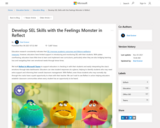
Learn how to use Reflect in Microsoft Teams to support educators and students. It allows students to easily voice how they are feeling in a safe manner. Educators can view student responses at-a-glance, help to identify students that need more support.

Search Coach empowers learners to build information literacy skills that transfer to all search engines. With Search Coach in Microsoft Teams, learners build skills in forming effective queries and identifying reliable resources. Educators then review learners’ work and track progress through Insights. Search Progress allows educators to build Search Coach into Teams assignments, giving educators a detailed view of learners’ research processes and critical thinking during a specific research project.

In this module, you'll learn to distinguish between two mindsets: a growth mindset and a fixed mindset. When you adopt a growth mindset, you set yourself up for success and are able to take on new challenges.
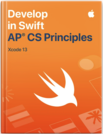
As a College Board Endorsed Provider, Apple’s Develop in Swift AP® CS Principles course helps students learn key computing concepts, building a solid foundation in programming with Swift while preparing for the AP® Computer Science Principles exam. Lessons take students through the app design process: brainstorming, planning, prototyping, and evaluating an app of their own. They’ll learn about the impact of computing and apps on society, economies, and culture while exploring iOS app development.
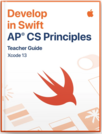
This Teacher Guide provides tools to deepen engagement with aesiring app developers, whether you have experience teaching with Swift or other programming languages.
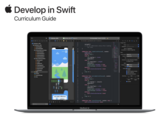
Develop in Swift is a comprehensive coding offering intended for students in grades 9 and above. The curriculum prepares students for college or a career in app development using the Swift programming language, and is complemented with free online professional learning for educators. Swift is designed for Mac—which supports all major programming languages—making it the ideal device for teaching and learning code.
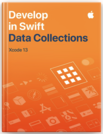
In this course, students extend their knowledge and skill developed in Fundamentals by extending their work in iOS app development creating more complex and capable apps. They’ll work with data from a server and explore new iOS APIs that allow for much richer app experiences—including dieslaying large collections of data in multiple formats. Students experience learning new features of the iOS SDK to continue their app developer journey.
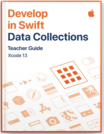
This Teacher Guide provides tools to deepen engagement with aesiring app developers, whether you have experience teaching with Swift or our programming languages. In this course, students extend their knowledge and skill developed in Fundamentals by extending their work in iOS app development creating more complex and capable apps. They’ll work with data from a server and explore new iOS APIs that allow for much richer app experiences—including dieslaying large collections of data in multiple formats. Students experience learning new features of the iOS SDK to continue their app developer journey.
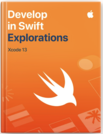
This course is designed to help students learn key computing concepts and build a solid foundation in programming with Swift. They’ll learn about the impact of computing and apps on society, economies, and cultures while exploring iOS app development. Lessons take students through the app design process: brainstorming, planning, prototyping, and evaluating an app of their own. While they may still be developing skills to convert prototypes into full apps, designing an app helps students grow into the exciting world of app development.
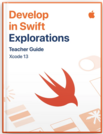
This Teacher Guide provides tools to deepen engagement with aesiring app developers, whether you have experience teaching with Swift or our programming languages. The Develop in Swift Explorations course is designed to help students learn key computing concepts and build a solid foundation in programming with Swift. They’ll learn about the impact of computing and apps on society, economies, and cultures while exploring iOS app development. Lessons take students through the app design process: brainstorming, planning, prototyping, and evaluating an app of their own. While they may still be developing skills to convert prototypes into full apps, designing an app helps students grow into the exciting world of app development.
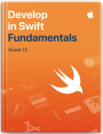
In this course, students build fundamental iOS app development skills. They’ll master the core concepts and practices of the Swift programming language that developers use daily and build a basic fluency in Xcode’s source and UI editors. Students will dive into the UIKit framework to create iOS apps that adhere to standard practices, including use of stock UI elements and layout techniques, and common navigation interfaces. They’ll also embark on an app design journey, using the App Design Workbook to define, prototype, and test their own app idea.